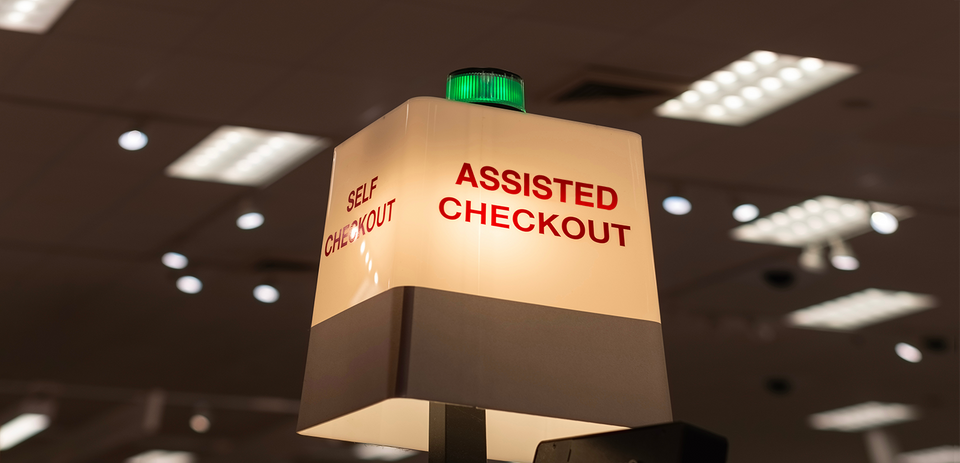Flexibility with strength

Increasing uncertainties around staffing availability have led to a rise in flexible checkouts that can be quickly adapted from being an assisted lane into a self-service counter. Retailers have tackled this in a number of ways, from deploying bespoke hardware through to installing pivot mounts for checkout screens to flip standard lanes between assisted and self-service modes.
While convertible lanes provide greater choice for customers and help firms mitigate short-term staffing issues, they also drastically change the profile for loss and theft from the store. The SAI Platform is uniquely placed to help retailers mitigate these risks while maintaining the flexibility they need.
Where did everyone go?
Between the Great Resignation, which came after the worst peak of the COVID-19 pandemic and the current trend for Quiet Quitting, it has been hard for large-scale employers to retain staff. This is especially true in retail, where workers are now suffering through an upturn in aggression and violence directed towards them.
Statistics from the last few years show that in mid-2020, around 1.5m retail workers were out of work, either through redundancy or furlough. As the economy moved out of recession towards the end of 2020 around half of those jobs came back quickly, with gains being made through to the middle of 2021.

Last year however, 4.7% of retail staff quit their jobs, according to the US Bureau of Labor Statistics. Further studies of worker sentiment suggest that up to 50% of workers are actively considering whether to quit or not. These disengaged staff members, doing the bare minimum day-to-day, have given rise to the term Quiet Quitting. Naturally, The Simpsons predicted this years ago.

Filling gaps with technology
The most intensively staffed part of a store, particularly in the grocery sector, is the checkout area. When staff are not available it makes a lot of business sense to change some of the redundant lanes into temporary self-service registers. This can be achieved at a strategic level by rolling out new hardware specifically designed to convert between assisted and self-service operation. The benefit of using this approach is that there will be various security mechanisms (security scales, etc.) built in to the machines that will help detect and mitigate loss in self-serve mode.
loss levels are ten times higher at self-service tills than at assisted lanes
A quicker, more tactical approach is to adapt existing checkout lanes to make the screen and barcode scanner available for use by customers. While there are obvious on-cost savings to be made by sweating existing hardware investments, the costs associated with product loss can spiral quite quickly. While dedicated self-service machines have some level of security checks in place, main checkout lanes rely on the staff member to ensure all items are scanned and paid for. Without the colleague present, customers are left to effectively use the honour system to pay for their shopping. Typically, loss levels are ten times higher at self-service tills than at assisted lanes, but add in the fact that main checkout lanes are often shrouded from view by racks of confectionary, magazines and other impulse-purchase products, and the opportunity for customers to steal products rises exponentially. Further to this, increasing the basket size through a self-service checkout also increases the risk of customers making honest errors or using the high volume of goods to hide deliberate non-scanning.
Flex with confidence
The SAI Platform has been developed to detect and prevent losses throughout the store, regardless of its front-end mix. Our computer vision algorithms have only ever trained on real-world examples of mis-scanning and other types of checkout fraud at assisted and self-service lanes. We offer a number of options to prevent losses at self-service checkouts, including visual prompts to help customers self-correct genuine errors, or alerting staff or security officers to more determined theft attempts.
The ultra-efficient AI models underpinning the edge-server solution can monitor up to sixty payment points without the need for a GPU, keeping deployment costs low and building your ROI as quickly as possible. Our simple, store-wide licensing model is designed to change with your business needs and give you the peace of mind that comes from deploying the industry’s most comprehensive scan-avoidance and theft detection system.

